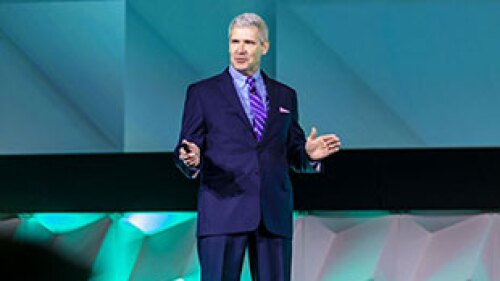Accelerating the trend toward remote work has allowed the opportunity to prove that companies are capable of sustaining a work-from-home model, but it has also revealed the necessity of being physically together. ULI Virtual Fall Meeting panelists from global companies Zendesk, Gensler, and LinkedIn discussed how the seemingly overnight shift to working from home may change the future of office real estate.
“At Zendesk, 30 percent of our global workforce will work permanently remote,” said Giselle Bonilla, director of global real estate at Zendesk. “There will be a huge shift to remote adoption post-COVID-19, and we anticipate flexibility will be of the utmost importance for employees.”
Zendesk is not the only company shifting to an agile workplace model. “The main reason we went agile was dollars per square feet, said Hao Ko, principal and managing director at Gensler, as he reflected on the San Francisco office’s rent price. “It became a practical way to manage the cost of our rent.”
The essence of having an office is the sense of community it creates. It is where coworkers can collaborate on shared projects, brainstorm innovative ideas, and catch up with friends and colleagues.
“This allows us to—and is the reason everyone is thinking about this model for the future—retain the talent that we have and give employees the ability to have more flexibility to work wherever they are. It relieves pressure to get all your work done at the office and lets individual work remain remote,” Ko said.
It is necessary to have the proper technology to enable the future of an agile workplace. Merging the ability to be connected while apart through a technology lens is a factor that many companies are still exploring.
Greg Gallimore, digital experience design director with Gensler, said, “So many companies are working on solving this problem. The challenge we have is the inability to test. Companies are very much in the prototype phase, and COVID-19 limits our ability to bring people together.”
Prototyping technology and workspace design will be crucial as we continue to navigate the new normal for workplaces, but the real challenge lies in the myriad variables at play–all of which are unique to each company. “We can’t retrain people in a whole new way. We don’t want to suddenly change the user experience completely,” said Gallimore.
In addition to the COVID-19 pandemic, other big topics being discussed in the real estate industry include climate change and equity, noted moderator Kelly Dubisar, design director with Gensler. Dubisar asked the panelists: “How do you see these three major movements shaping the conversation in your organization and your employees?”
Ko, a member of Gensler’s global race and diversity committee, noted that “in many ways, the office as it was traditionally was always a place of equity. It was a place where employees had equal access to the resources they needed to get their job done.”
However, the job-related resources available to each employee in their home vastly differ among individuals. The following question then arises: how can working from home be made more equitable among employees?
“Even more energy needs to be focused on how we can support our employees at home,” said Ko, reflecting on specific resources that senior-level employees may have at their advantage compared with resources available to entry-level employees.
“I think this is the biggest problem we have,” said Brett Hautop, senior director of global design and build with LinkedIn. “How do we make the people in the room and those joined by phone feel like they are on the same plain?,” he asked. Collaboration becomes challenging—including aspects such as engaging colleagues on the phone and conference room tech functionality and design.
Gallimore highlighted exciting advances that Zoom recently launched to capture attendees’ engagement during a meeting. “The ‘Visualizer’ plug-in dynamically shows the amount of contribution given during a meeting. Managers can start to use this to see who does or does not have a seat at the virtual table and help improve collaboration,” he said.
Panelists agreed that the office will not die—but they said it will never be what it was before. Trends in workplace strategy, employee experience, and workplace technology are all factors that enable real estate leaders to anticipate the landscape of tenant needs that will drive development.


